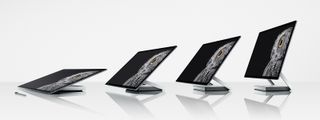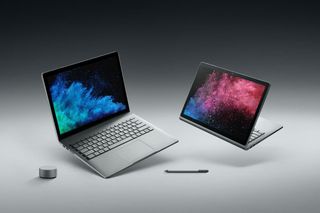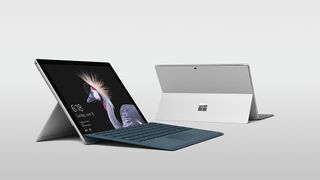The future of Mac hardware should be more flexible

Changes are a-coming to the Mac line. Project Marzipan — if reports are to be believed — will allow iOS developers to build Mac versions of their apps without breaking a sweat. This has fed the recurring rumor that macOS and iOS are on some sort of collision course to be merged into something altogether new, but Apple CEO Tim Cook splashed some cool water on that tale in an interview with Peter Wells for The Sydney Morning Herald:
We don't believe in sort of watering down one for the other. Both (The Mac and iPad) are incredible. One of the reasons that both of them are incredible is because we pushed them to do what they do well. And if you begin to merge the two ... you begin to make trade-offs and compromises.So maybe the company would be more efficient at the end of the day. But that's not what it's about. You know it's about giving people things that they can then use to help them change the world or express their passion or express their creativity. So this merger thing that some folks are fixated on, I don't think that's what users want.
Bottom line? Even if macOS and iOS stay separate operating systems, we may soon live in a world where they share a lot in common.
All of this is interesting from a software perspective, but I want to focus on Apple's hardware, especially given whispers of Apple preparing ARM-powered Macs that use the same type of CPUs that power the iPhone and iPad, leaving Intel behind.
No matter what the future may bring to the Mac, I think most people would agree that Apple has remained quite conservative when it comes to design of its computers. And when considering where it might travel next, I took a look at one of Apple's oldest competitors: Microsoft.
Expanding the Apple all-in-one
The iMac and iMac Pro of today follow the same recipe introduced with the iMac G5 way back in August of 2004. The machine floats on an aluminum arm, with all the computer bits tucked behind the screen in a nice, tidy package.
At first glance, the Microsoft Surface Studio looks like an iMac clone, too, but the all-in-one has a few tricks up its sleeves.

The 28-inch display is touch-sensitive, and can be used with a stylus for detail-oriented work in apps like Photoshop, Illustrator and more. And touch isn't the Surface Studio's only trick; the whole thing can slide down, mimicking a drafting table:
Master your iPhone in minutes
iMore offers spot-on advice and guidance from our team of experts, with decades of Apple device experience to lean on. Learn more with iMore!
This makes it easier to hunker down with a project, getting as close to the glass as possible. It also helps with fatigue that can occur using a vertically-oriented touch panel for hours at a time.
Microsoft sells an accessory called the Surface Dial.. It can be attached to the screen and unlock a whole range of tools in professional applications. It can be used to select from a range of brushes in a drawing program, or be spun around to control playback in audio editing suites.
I'm not saying that the iMac's rigid posture or lack of touch is holding it back: I make my living producing words, audio and video on an iMac Pro! That said, something flexible like the Surface Studio (coupled with the power and rich ecosystem of macOS) could be tempting for many professionals. That said, the Microsoft Surface Studio hasn't taken the world by storm; it is expensive (and a little under-powered), but the truth is that we live in a portable world.
Mouse, keyboard, touch screen, and pen
Microsoft has some of the most interesting products available in the portable market. They may not be as popular in market share, but the Surface Book and Surface Pro still brings some interesting features to the table.
While the Surface Book looks like a traditional notebook,1, it has a crazy hinge that gives it more flexibility than anything Apple has carved out of aluminum in recent years.

You can unclip the display of the Surface Book at any time to use it as a tablet, or reattach it backwards so that the device can be used flat on a table with its aforementioned stylus and Dial, with the keyboard base's extended battery and GPU attached.
The Surface Pro is unlike any Mac on the market today, but it does share some similarities with the iPad Pro (when coupled with a Smart Keyboard):

The most interesting thing about the Surface Pro may not be its clever keyboard or kickstand, but the fact that it runs full-blown Windows. Microsoft never really had the two-operating system strategy Apple employs (RIP Windows Mobile), so it had little choice there. But in going the Windows route, Microsoft has given its users the power to choose when they want to use Windows 10 Pro or the more simplified Windows 10 S.
I'm not advocating for Apple choosing one operating system over the other: There are some of us who prefer macOS over iOS and vice versa. But giving the iPad Pro the option of running multiple operating systems could unlock that power in new ways and places. The 12-inch MacBook is pretty portable, but it's still a clamshell device: Unclipping the display and walking away with it could prove handy for some.
Moving Forward
I don't think the Mac is doomed, or that it's going to fade into history anytime soon. However, I do think it may be feeling stale in places, and for some users, the current crop of hardware doesn't offer the flexibility they demand.
Microsoft, on the other hand, is building high-quality, flexible hardware. While some of it may be niche, I think that's fine, and I think Apple should take a peek over the fence sometimes and see what the broader market is doing.
All images courtesy of Microsoft.
- Which Microsoft also makes, but for some reason, it's covered in alcantara ... yikes. ↩
Stephen Hackett is the co-founder of the Relay FM podcast network. He's written about Apple for seven years at 512 Pixels, and has more vintage Macs than family members living in his Memphis, TN home.
Most Popular






